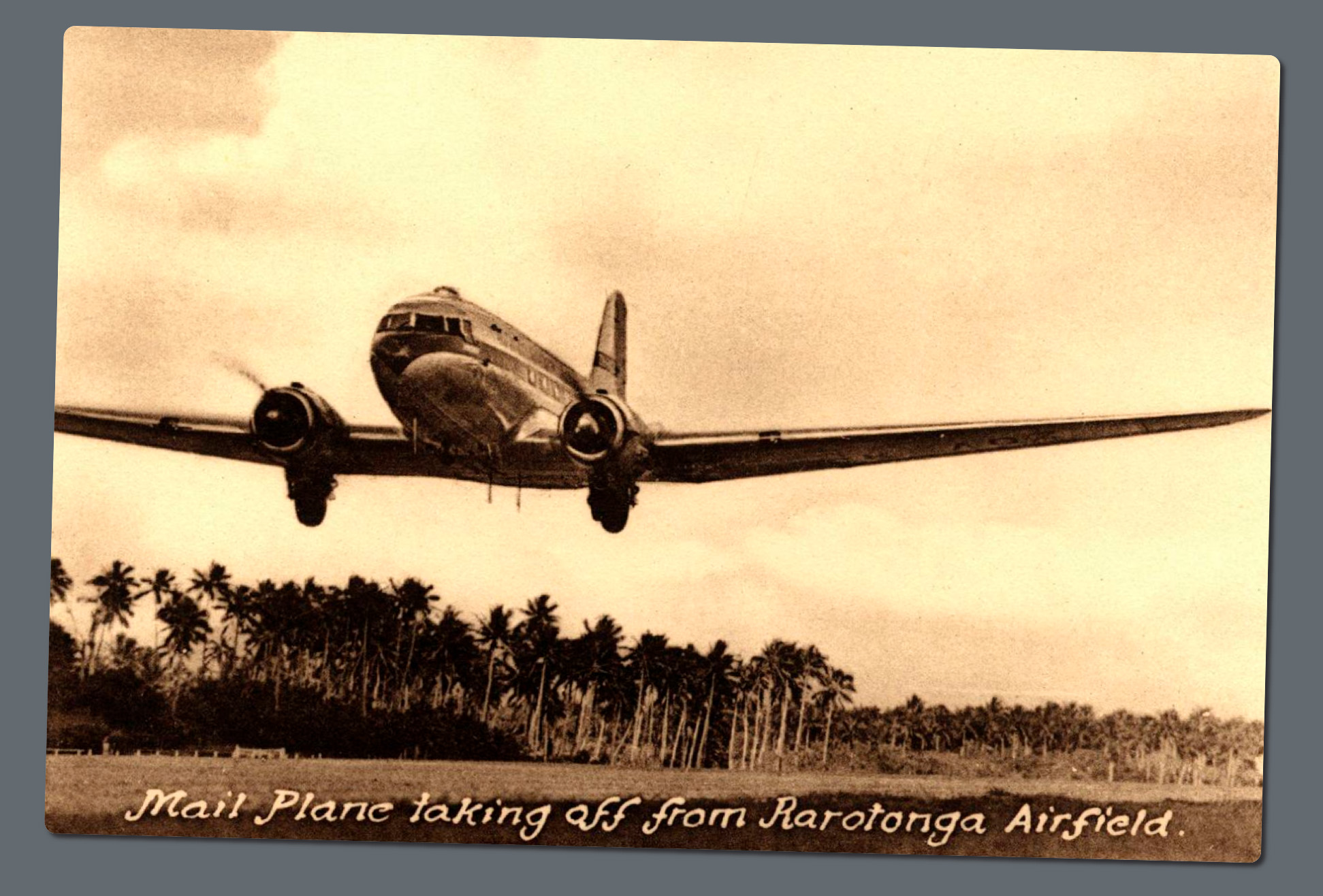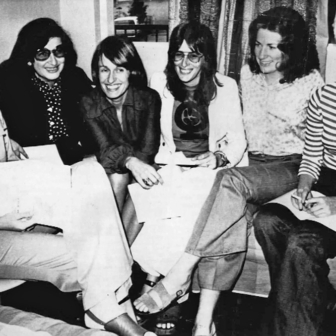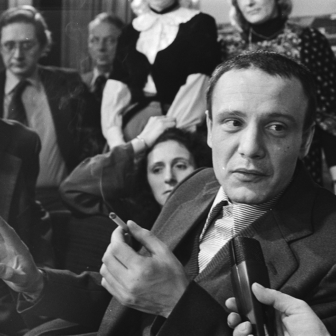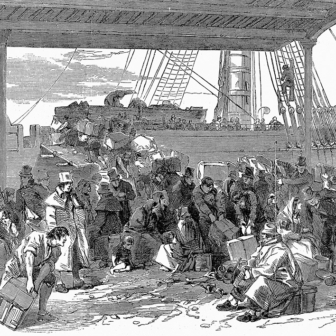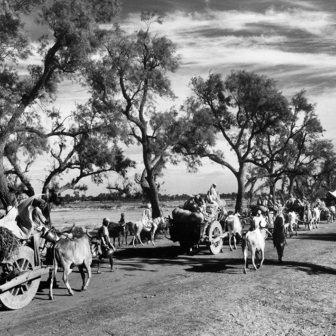“First thing to learn about the islands is not to ask a man his last name. Second is not to ask where he is from and the third why he is here in the first place.”
It was a boozy seaplane pilot who introduced me to the idea that the islands of the Pacific are places of escape. His name was Jake Cutter, and he was the lead character in Tales of the Gold Monkey, a television show I adored as a child. Set somewhere in the Pacific Islands before the onset of the second world war, the show is nowadays squirm inducing. Pacific Islanders themselves barely figure, and the storyline contains every conceivable stereotype of the Westerner abroad — the drunk fleeing bad debts and a failed marriage, the swashbuckler with the whisky affliction, the fortune-hunter with a dark past — every character some version of the wild rover washed in from distant shores.
Cutter’s series was an entry point for me into Somerset Maugham and James Michener, each of whom trafficked in similar but more well-rounded stories about the bluffers, beachcombers, bankrupts, buffoons, miners, traders and other flotsam lost at the tail-ends of empire.
As George Orwell observed in his essay on boys’ weeklies, the characters, sounds and impressions encountered in popular culture at an impressionable age can leave indelible impressions. In adult years, some of them were reinforced when I read the histories and memoirs of the actual men and women who made the Pacific their home — accounts as frothy as anything dreamt up by a novelist. Later, I came to Pacific writers too, like Epeli Hau’ofa, who often skewered the affectations and foibles of this expat class as well as dinging the imperfections and occasional craven obsessions of Pacific islanders themselves.
I packed some of these old stories and histories to tide away idle hours during recent work excursions into the Pacific. I lugged them from the Cook Islands in the south seas to Saipan, up on the other side of the equator in the Commonwealth of the Northern Marianas Islands, and then down to Papua New Guinea. I read them in bars, coffee shops, near the pool, on planes, at a tourist show, during an achingly dull presentation on “Pacific regional architecture.”
Perhaps it was my reading diet, perhaps the clammy heat, but sometimes, when I’d look up too quickly at the present-day characters arrayed around me, I’d see similarities. The Pacific seemed still choc-a-block with old-timers. Who are they? What did they do? How did they end up there? And were they ever going to leave?
The first step on my busman’s holiday-cum-literary pilgrimage was the largest of the Cook Islands, Rarotonga. I remembered it from previous visits as languid in the extreme, yet recent headlines had been treating it as the latest frontline in the Pacific’s great game. In February, the country’s prime minister, Mark Brown, signed a package of agreements with China that set strategists’ pulses a-racing and political leaders in New Zealand, the former colonial power that retains loose oversight of the Cook Islands, into apoplexy. Would the place be different from my memory?
Not so much. The small capital, Avarua, was just as sleepy as I remembered. Tourists, mostly Kiwis, were ambling up and down the main drag eating ice cream and ducking in and out of shops offering pearls and knickknacks. Strikingly, not a Chinese person was to be seen. Unlike in many other parts of the Pacific, I saw no Chinese stores, roadworks or new buildings, and no vehicles with “Chinese aid” logos affixed. If this was a beachhead, it was a submerged one.
There were lots of foreign faces, though. In the old books and memoirs, the foreign faces were white. Most arrivals nowadays hail from other shores: Fiji, Indonesia and the Philippines, many filling jobs in tourism and construction. These were people chasing the timeless emigrant dream of a better life. Where are all the Cook Islanders? Many have made their own move, heading off for better-paid work in New Zealand and Australia. Ten times more Cook Islanders live out of the country than within.
A Fijian poured me a cold Cook Islands Lager. I was at the bar at Trader Jacks, Avarua’s archetypal expat spot, which was as just as I remembered it: the type of a place where Somerset Maugham could have written a story about how tropical lassitude wearies the soul. Its founder — long-term expatriate Jack Cooper — was no longer in residence: the New Zealander had gone to the great gin palace in the sky, his memory memorialised with a picture near the toilets that showed him in a loud shirt, cigarette jutting from his mouth, flanked by sixteen bottles of his favourite snifter.
Cooper never wrote the book he threatened, the provisional title of which was the winning Forty Years Behind Bars. But a shelf of amiable books shares the theme of the antics, affectations and foibles of Cook Islands expats. Among them is Years of the Pooh-Bah, an account of the odd assortment of characters New Zealand sent to administer the place during colonial rule, and Tales of the Papa’as, papa’ā being the name in Cook Islands Māori give to Westerners. Each papa’ā in the book is as colourful, eccentric and waggish as the one before.
Apart from one, all books about Cook Islands are either written by or about men. A fellow bookworm and consultant, Hilary Gorman, who put me onto many volumes in my Cook Islands’ collection, confirmed the profound gender disparity. After seventeen years in country, this Canadian expat academic only knew of one tale told by a woman, about a woman or from a woman’s point of view: My Kokotu of the South Seas, by a New Zealander called Helen Henry who had married into a storied Cook Islands political family.
If a pronounced gender bias is a common theme, immersion in local politics is another. Many of the papa’ā in these works forged alliances or business relationships with members of the country’s political elite — deals that invariably ended calamitously. In one case, in the 1990s, a currency scheme nearly bankrupted the country.
Some of the Cook Islands’ present-day revenue-raising schemes echo those freewheeling times. The world’s fastest-growing “flag of convenience” shipping operation is run out of a small office close to Trader Jacks, and the country has an offshore banking industry renowned as a good place for rich Americans anticipating divorce to stash money away. It’s the modern-day version of Jake Cutter’s observation that the islands aren’t a place where you ask too much about anyone’s past.
Other enterprising types are involved in deep-sea mining, a frontier venture that prior generations of papa’ā couldn’t have dreamed of. The seabed here is replete with nodules rich in cobalt; according to some estimates, as much as $10 trillions’ worth of the element lies waiting under the sea. Three exploration licenses have been issued for this very twenty-first-century form of speculation.
The local newspaper, the Cook Islands News, remains essential reading. It combines the fiddle-faddle of the parish-pump newsletter with a reminder that these islands, despite a population of just 15,000, are a place of ever more interest to outside powers. For every story about the police breathalysing Friday evening carousers, there is another about the prime minister meeting Chinese and American delegations keen to invest in deep-sea mining.
Although it may have lost some of its centrality since the arrival of smartphones and social media, the paper’s website provides a window onto this world for an annual NZ$115 (A$102) subscription. The printed version, which retails locally for NZ$2.50, is best enjoyed on a barstool at Trader Jacks, where the reader can look around to see if any of the characters mentioned in the paper are propping up the bar.
It was early June when I was visited. The King’s birthday awards had recently been announced and the Cook Islands News was festooned with profiles of gong recipients. The highest honours went to two men who looked like modern-day incarnations of the papa’ās in the books I had been reading, although they had achieved markedly more success in business. One runs the airline, the other manages the country’s largest trading corporation. Each in his own way made life in the far-flung chain of islands viable by providing air links and almost everything non-human I could see in the bar, including the clothes of the patrons.
Yet, as I discovered from Hilary Gorman, many of the other long-stayers were engaged in much less visible work. What was striking was how many of those working with civil society organisations hailed originally from overseas and how many were women. They were environmental campaigners, advocates for nutrition and the importance of exercise, preservers of cultural heritage, teachers, odd job women and the occasional man who did tedious bureaucratic work to keep organisations above water. Few could be doing it for the money, observed Gorman, as each job came with long hours and small pay.
These are smell-of-an-oily-rag operations reliant on occasional goodwill from the civil society funds of countries like Australia, New Zealand and Japan. The long-timers are practitioners of politics as the art of the possible. They know when to push and lobby, and when to ease off. They are schooled in the fate of others, those who came a cropper by either trying too quickly or being too bolshie.
These unsung long-timers are playing a between-two-worlds role. ANU doctoral student and ni-Vanuatu woman Anna Naupa calls them buffers. Being outsiders gives them latitude to operate in uncomfortable or sensitive spaces. The latitude has limits, though. Rare was the long timer, no matter how extensive and storied their tenure on the islands, who could wade head-on into public opining on politics. This may explain why the supplest muscle in every long-timers body in the Cook Islands seemed to be in the neck, so often does it turn to see whether it’s safe to offer sotto voce opinions.
Pleasant as the Cook Islands is, it would take a special kind of mettle to stay too long. I loved my time there but was happy to leave; the smallness of the place closed in on me after a few weeks. It was no surprise to learn that many who arrive from overseas to work don’t last. There is little in the way of high-end living, literally; no building can be higher than the tallest coconut tree, an edict of the first prime minister, Sir Albert Henry — a man, incidentally, whose career ended in ignominy owing to one of those disastrous get-rich-quick schemes engineered by a papa’ā.
I was picked up at the airport on Saipan, the largest island in the Commonwealth of the Northern Marianas Islands by an Indian man wearing an “I Love New York” t-shirt. This was my first visit, but the driver had been on Saipan twenty-eight years and — as if to pre-empt any questions I might have in these Trumpian times — was anxious to tell me he was a citizen. He moved there as a youngish man and had been sending money back to his family each month ever since.
When I told him I’d arrived from elsewhere in the Pacific, he said that the Cook Islands sounded as far away as Syria would be to an Indian: part of the same continent but that’s where the similarities mostly end. To fly from Rarotonga to Saipan takes three days via New Zealand, Australia and Japan. It is a reminder of the vastness of the Pacific Ocean and how little aviation connectivity there is in a region often glossed as being part of one big Pacific family.
I didn’t conduct a scientific survey, but it seemed that only government officials from either Saipan or Rarotonga had spent time in both places. But interest from the major powers was resulting in more meetings, more travel. Pacific officials complain about a steady diet of meetings, training, consultations and workshops that takes many away from their offices for long periods. (Though I wondered how genuine such complaints truly are: as often as not, many I’ve encountered seem happy to take up expenses-paid travel opportunities.) One fellow in Saipan told me that he was on the road three months a year attending such parleys.
Geopolitical competition is also a boon for the hoteliers and airline shareholders of the Pacific. There is a timelessness to this; Hau’ofa’s stories are set during the cold war, the last time the Pacific aroused the interest of the major powers. His characters are forever jaunting away from the office too, “riding the tidal wave of development,” as he put it. The more things change…
Like nearby Guam, the Marianas is a US territory. Its feels as distinctly American in flavour as the Cook Islands feels like New Zealand. Everything seems bigger here: the cars, the portion sizes, the waistlines. Somewhere in crossing the Pacific I had flown not only over the international dateline but also over an international rugby line into a gridiron zone.
The makeup of the Marianas long-timer is different too, owing to more restrictive visa regulations here than in other parts of the Pacific. This is a place for men and women who left the islands in their youth to serve in the US military and have returned in their golden years, or for Americans from elsewhere in the country to retire.
Some of the seniors are no-nonsense sorts; a neighbourhood watch meeting was going on in an adjacent table at a restaurant when I was having lunch one day. Yet Saipan has long had a reputation as a sunny place that has attracted people at the shadier end of the scale. It is a reminder that not all who come to the Pacific have civic-mindedness in mind.
The American apotheosis of the shady sort is Larry Hilbloom, man who put the H in the logistics company DHL. Hilbloom lived like a monarch on a cliff-edge bungalow on Saipan; his nickname, which he devised, was King Larry, the title of a book I picked up documenting his wild life and times in the closing decades of the last century. In Saipan, he bought the local bank and telecoms outfit and inveigled himself into the justice system. He managed to have himself named a justice on the Saipanese supreme court to adjudicate on a case that involved him. A man of satyric impulses, he flew around Asia indulging illegal desires.
Then came his mysterious death. In 1995, he took off from an uninhabited island in the Marianas chain to Saipan with two companions. His plane crashed. The two other bodies were found but Hilbloom’s never was. I spoke to one of the police investigators who found the plane, a sensible man who did not strike me as prone to conspiracism. He was convinced Hilbloom faked his own death and was still likely to be carousing in one of those Asian fleshpots where law enforcement was pliable or buyable.
I walked past one of the Saipan bars in which a small model plane had been erected on a plinth as if in karmic irony and called into another for a drink. I looked at some of the paunchy and weather-battered men in loud shirts in these end-of-the-line bars staring intently at their phones and wondered what their stories were. They might well have looked up at me and surmised the same thoughts. I typed “What are they doing here? What am I doing here?” along with “This place has a dingy charm” into my phone and ordered another Bud Light.
The other obvious set of old timers in Saipan are US military veterans from wars past. These days, if you’re very lucky, you will see one visiting the American Memorial Park, which commemorates a pivotal American victory in the second world war. Such pilgrimages are more or less non-existent now, the park ranger said. People are put off both by the distance — not counting stopovers, the flight from the US west coast takes fourteen hours — and by the passage of time. A twenty-year-old who fought in the Battle of Saipan would be a hundred years old.
But their career descendants are still prominent in Saipan. A large “tabletop” wargame was going on when I was there, part of an effort to bolster America’s western-flank defences in preparation for possible war. The runway on nearby Tinian Island, from which the planes took off to drop nuclear bombs on Hiroshima and Nagasaki, is being upgraded at the cost of US$800 million.
For all the looking over the horizon, there is a nearby reminder of a once-omnipresent Chinese presence US authorities did next to nothing about. This is a giant palatial casino resort — 3000 rooms inside, a shoal of rococo dolphins and abandoned stretch limousines outside — that once attracted Chinese high-rollers who gambled their way through US$4 billion dollars a month. The site was a suspected money-laundering venue and visitors suspected of using Saipan as a back-door entry to the United States. The casino sits as a reminder of what can be built in plain sight on the America’s farthest shores.
The resort closed during Covid and has yet to reopen. Nearby tourist restaurants are shuttered. The few people left from the boom forlornly staff beauty parlours murmuring offers of special massages to walkers-by.
“Port Moresby? So different to here,” observed a government official in Saipan when I told her the Papua New Guinean capital was my next stop. She had been there recently for one of those ubiquitous training sessions and she wasn’t giving the place a five-star rating.
“I thought it would be like Guam,” she groaned. Her pre-departure image of a palm-fronded paradise with cheery locals was far from the hermetic reality. She spent two weeks cooped up in her five-star accommodation, bussed to the training and warned by her hosts — in kindly but not uncertain terms — that walking the streets was not recommended.
It takes two days to travel from Saipan to Port Moresby, the third point on my roughly triangular trip. I arrived via Tokyo and Brisbane, crossing from an American to a distinctly Australian habitus, sushi in between, and back into the Pacific’s rugby zone. The NFL posters in bars are replaced with the logos of NRL teams. But the Pacific’s largest, most populous country has also produced the most writing: derring-do accounts of the early British colonialists, ghostwritten hagiographies, mystery novels and one book of doggerel.
PNG was a publisher’s paradise during Australian colonial times, when expatriates were running commerce, government and the churches. Back in the early decades of the last century the Irish writer Beatrice Grimshaw bucked the entrenched misogyny of her era to rule the Papuan literary scene, her works serialised in the New York Times and acclaimed by Australian prime ministers. She wrote more than forty adventure novels and travel books with titles like The Sorcerer’s Stone and In the Strange South Seas. I picked up many of them for little more than the price of the postage on secondhand book websites. One had a little card attached thanking the recipient for “helping keep the lights on for another few days,” a reminder of the perennially tight margins in the book industry.
Nowadays, only the hardiest publisher will dare to venture here. No obvious reading culture exists except for one very particular genre. In the city’s dimly lit Vision City mall are little pop-up stores selling self-help books adorned with pictures of big-haired American evangelists and bombastic business gurus.
Particularly prominent was the literary oeuvre of one Robert Kiyosaki, author of the Rich Dad, Poor Dad series. I googled him to find out more and discovered a salutary tale. News stories had him admitting he was more than US$1billion in debt. His own advice clearly hadn’t worked; he was going to need all the help he could get if PNG’s book-buying market had become a principal income stream.
Papua, Grimshaw wrote, was a place for ambitious second sons to make their fortune. At first blush, the expat scene seems to skew older nowadays. Many men are still there but now well into the second half of their lives, working in oil and gas or behind-the-scenes helping with the paperwork of government.
Many fly in and fly out; they constitute most of the passengers on people on the flights up and down from Australia. The oil and gas workers would be wearing their uniformed tradie shirts emblazoned with logos displaying boosterish inscriptions like “534 days on site without an accident.” The consultant types are different: R.M. Williams shirts, chinos and boots. Many are former public servants from Australia, hired because they can write administrative English and navigate the vicissitudes of government.
Physical danger isn’t a risk — their most daily difficult physical safety challenges would involve navigating a scalding flat white — but it is still treacherous work navigating the bureaucratic jungle. These are occupations that reward watchfulness and where the less one advertises one’s centrality or role, the better. It’s a role I had for a spell but realise I could not do for long.
A person who does put himself out in the public square is Paul Barker. An Englishman with jack-in-the-box levels of enthusiasm, Barker manages the Institute of National Affairs, a Port Moresby outfit producing commentary and policy advice on PNG’s society and economy. Like many, he came to Papua New Guinea as a young man and never left.
When Barker arrived in 1978, the country’s present prime minister, James Marape, was in primary school. Apart from an eighteen-month stint in nearby Solomon Islands, the Englishman has stayed put. He spent a quarter century in the agriculture department and sixteen in the prime minister’s office. It was time well spent for his current role.
Barker is respected to the point where he’s no longer even considered different, a part of the Moresby fabric. Being familiar but not of the place gives him the moral legitimacy and latitude to speak out on social and economic issues buffeting the country. When I asked him about his role and how he knows when to push and when to pull back, his answer was resonant of those in the Cook Islands.
“Most Papua New Guineans respect you for saying things that many people think but many have to keep their heads below the parapet about,” he said. “Some Papua New Guineans are speaking up quite strongly on social media. But sometimes it gets sort of emotional. I’m trying to say things in a reasonably rational, calm manner. Sometimes, some Papua New Guineans say ‘You should speak more forcefully.’ And yeah, well, if you speak too forcefully, then you know you’re going to be on a one-way ticket somewhere.”
“Paul isn’t only an expat,” said the economist Maholopa Laveil. “The fact he has a Papua New Guinea family and resided this long, lends his comments weight. I’ve learned a lot from him over the years, and he has inspired a passion for speaking truth to power.” Whether a new generation of Barkers will replace him is an open question.
On my final night, I called in for a drink at the whiskey bar at my hotel, many of whose denizens could have fit into a twenty-first century reboot of Tales of the Golden Monkey. Some oil and gas types having furtive conversations with a Papua New Guinean wearing a pork-pie hat, an old consultant I knew from yesteryear pounding whiskey while pretending not to know me and a group of Aussies who had returned from doing the Kokoda trek toasting their exploits. A woman limped in on crutches and ordered a large glass of wine. Waiters sashayed around the room with crudites.
I’d been in so many of these mise en scène(s) in Port Moresby over the years. It’s a place I loved returning to; I had many friends here and I loved checking in with the intrigues, but was I was glad I no longer had to metabolise them or worry about losing my footing in its bureaucratic jungle.
A memory came back to me, of a conversation I had with an old-timer in a bar like this some years back, one that changed my direction. He was burnt-out case; someone who kept coming back for work to Papua New Guinea because his wife in Melbourne liked the money was making but didn’t like him. He was engaging in energetic sugar daddy relationships which he implied was taxing his vigour and made me hope he had comprehensive medical insurance. “I’m still not sure which of those characters I am, though,” he said. “You know, the misfit, the missionary or the mercenary.” When he asked me which archetype I was, I knew the universe was telling me not to renew my contract.
Of all the people in Paradise lounge at Port Moresby international when I flew out, the one who sticks in my mind the most was the pale man with gelled hair tottering around with a plate of cheese in one hand, a tumbler of wine in the other, the volume sloshing therein proportionate to the size of his head. The hands of the clock had just nudged past noon.
I thought of some of the people I’d met on my journeys and whether they resembled the beachcombers in the books and TV shows of old. Of course, the Pacific was different then. Except for the Kingdom of Tonga, it was one big imperial lake permeated by Australians, Americans, British, French, New Zealanders and, further back, German and Spaniards. Nowadays, the Pacific is home to fourteen independent countries alongside other places, like Cook Islands and the Marianas, that still have the imprint of empire.
The novelistic way to render the collective stories of the modern-day castaways would be in absurdist hues, to write up these middle- to late-aged men and women as modern-day beachcombers barnacled onto Pacific societies because circumstances and life choices mean that they can’t be anywhere else.
But that wouldn’t be entirely accurate or fair. Some are plainly on the islands for dubious reasons and others seem like rebooted versions of their forebears, the traders selling washing machines and blenders rather than calico cloth and looseleaf tobacco. There are still plenty of gold-diggers around: the deep-sea miners of the Cooks and the copper and gold miners of Papua New Guinea. Just as many, though, are playing roles as buffers: fixers, solvers, advocates, consciences and factotums. All forms of the human condition are here.
With the Pacific framed ever more as a tug of war between two great powers, my trip was a reminder that for all the impersonal talk of security pacts, alliances, Chinese inroads and US retreats, individuals matter as much as ever. •
